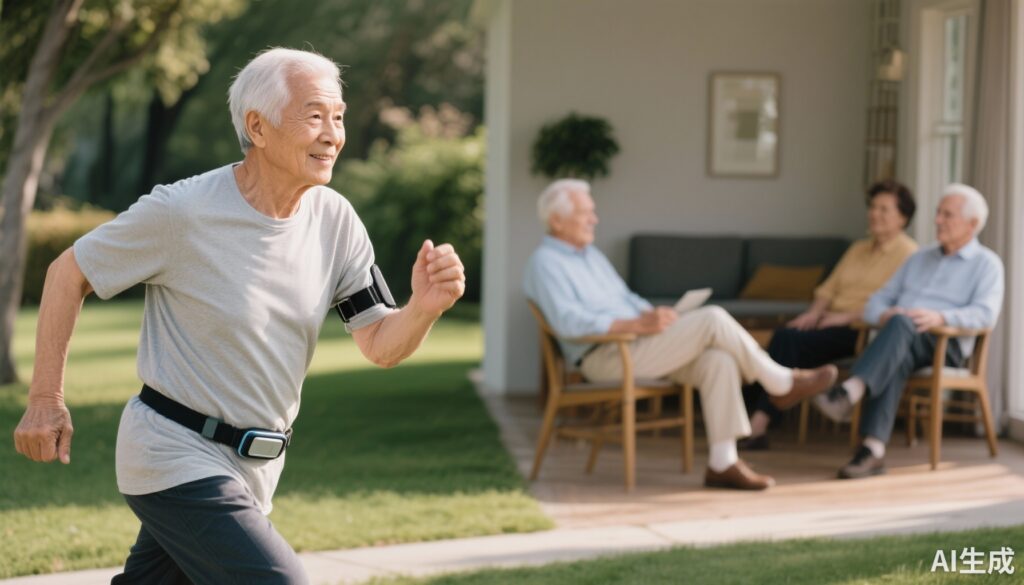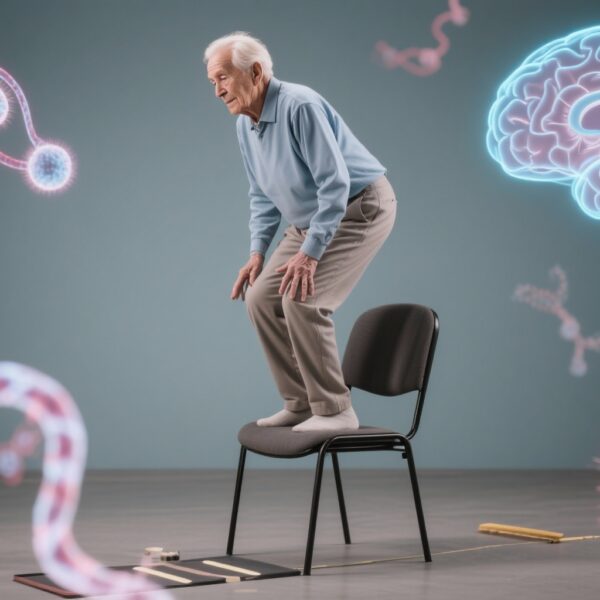Background
Intrinsic capacity, a composite measure encompassing the physical and mental abilities of an individual, has emerged as a pivotal marker of healthy ageing. Put forth by the World Health Organization (WHO), this construct integrates multiple domains including vitality, cognition, psychological status, locomotion, vision, and hearing, reflecting an individual’s functional reserve and resilience. As populations age globally, understanding modifiable lifestyle factors that influence intrinsic capacity trajectories is critical for extending healthspan and reducing disability burden. Although physical activity is widely advocated for healthy ageing, the differential impact of various movement behaviors — particularly moderate-to-vigorous physical activity (MVPA), light physical activity (LPA), and sedentary behavior — on intrinsic capacity remains insufficiently characterized in real-world older adult populations.
Study Design and Methods
The Seniors-ENRICA-2 study is a prospective, population-based cohort study conducted in Spain, recruiting community-dwelling men and women aged 65 to 94 years. Baseline assessments included objective measurement of physical activity and sedentary time via accelerometers, enabling precise quantification of time spent in sedentary behavior, LPA, and MVPA. Intrinsic capacity was evaluated using a composite score derived from six domains: vitality (incorporating handgrip strength, appetite, and weight loss), cognition (Mini-Mental State Examination), psychological health (Geriatric Depression Scale), locomotion (Short Physical Performance Battery), vision, and hearing. Participants were assessed at baseline and followed up twice over a median period of over five years.
Out of 3,273 recruited participants, 2,477 with complete baseline data were included in the analyses. Follow-up data were available for 1,463 and 940 participants at median intervals of 2.3 years and 5.5 years, respectively. The study employed advanced statistical modeling to examine the association of baseline movement behaviors with changes in intrinsic capacity over time, adjusting for potential confounders.
Key Findings
The pivotal findings of this investigation highlight a significant association between movement behaviors and changes in intrinsic capacity among older adults. Specifically:
– Higher baseline levels of MVPA were positively associated with improvements in intrinsic capacity over the follow-up period. The mean percentage change (MPC) per 15-minute increase in MVPA was 0.63% (95% CI 0.06 to 1.21), indicating a dose-responsive beneficial effect.
– LPA did not demonstrate a statistically significant relationship with intrinsic capacity changes (MPC -0.39%, 95% CI -0.85 to 0.07), suggesting that light-intensity activities may be insufficient to influence the complex domains measured by intrinsic capacity.
– Increased sedentary behavior was linked to declines in intrinsic capacity (MPC -0.29%, 95% CI -0.57 to -0.01), highlighting the adverse role of prolonged inactivity.
When stratified by tertiles, participants in the highest and intermediate MVPA tertiles exhibited marked improvements in intrinsic capacity compared to the lowest tertile (MPC 4.83% and 5.44%, respectively). Conversely, the lowest and intermediate sedentary behavior tertiles showed significant improvements relative to the highest sedentary group (MPC 5.48% and 5.73%, respectively), reinforcing these dose-response relationships.
Discussion and Expert Commentary
This study provides robust prospective evidence supporting that MVPA, but not LPA, is crucial for maintaining and improving intrinsic capacity in older adults. The findings emphasize that not all physical activities confer equivalent benefits, and that moderate-to-vigorous intensities are necessary to effectively influence domains such as strength, cognition, and psychological well-being.
The detrimental impact of sedentary behavior compels clinicians and public health practitioners to prioritize interventions that reduce sitting time alongside promoting MVPA. Mechanistically, MVPA may enhance cardiovascular function, neuroplasticity, muscle mass, and psychological health, directly modulating the domains encapsulated by intrinsic capacity.
Limitations of the study include potential selection bias due to attrition during follow-up and unmeasured confounding factors such as diet and comorbidity severity. Nonetheless, the use of objective accelerometry and a comprehensive intrinsic capacity measure strengthens the validity of the findings.
These results align with WHO guidelines advocating for at least 150 minutes per week of moderate-intensity activity for older adults and add the insight that increasing MVPA levels can translate into multidimensional functional preservation.
Conclusion
The Seniors-ENRICA-2 prospective study confirms that in older adults, higher levels of moderate-to-vigorous physical activity significantly improve intrinsic capacity, whereas prolonged sedentary behavior contributes to its decline. Light physical activity alone does not appear sufficient to yield significant benefits. These findings underscore the importance of targeted public health messages and clinical interventions aimed at increasing MVPA and reducing sedentary time to promote healthy ageing and functional independence.
Future research should explore tailored strategies to enhance MVPA participation in older populations, investigate the causal mechanisms underlying these associations, and consider the integration of intrinsic capacity monitoring into geriatric clinical practice.
Funding
This study was supported by the Instituto de Salud Carlos III, Spanish Ministry of Science and Innovation, French Agence Nationale de la Recherche, European Regional Development Fund/European Social Fund, Fondo de Investigaciones Sanitarias, and the EU NextGenerationEU/Plan de Recuperación, Transformación y Resiliencia.
References
Sánchez-Sánchez JL, Ortolá R, Banegas JR, Lucia A, Rodríguez-Artalejo F, Sotos-Prieto M, Valenzuela PL. Association between physical activity and sedentary behaviour and changes in intrinsic capacity in Spanish older adults (Seniors-ENRICA-2): a prospective population-based study. Lancet Healthy Longev. 2025 May;6(5):100681. doi: 10.1016/j.lanhl.2024.100681. Epub 2025 May 22. PMID: 40414228.



